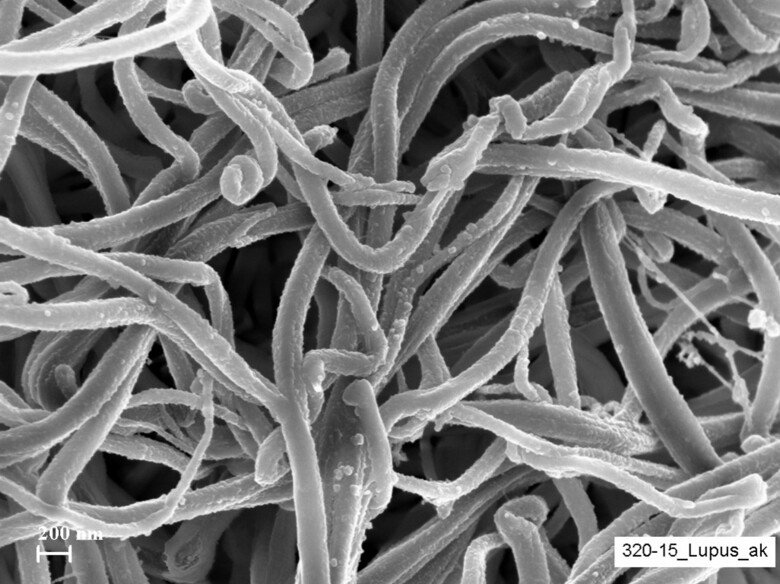Global hemostatic methods
Could global hemostatic methods be used as plasma biomarkers in the bleeding and thrombotic conditions when routine coagulations assays do not help? This is something that Dr Jovan Antovic and his team are investigating.
Jovan Antovic
Professor/Senior PhysicianHemostasis is a physiological system that contributes to the maintenance of homeostasis in the human body. The components involved in hemostasis include blood vessels (primarily the vascular endothelium and the subendothelium), blood cells (especially platelets but also white blood cells and erytrocytes) and soluble plasma proteins (coagulation factors, mainly serine proteases) involved in blood coagulation and fibrinolysis.
Numerous proteases, cofactors, inhibitors, and blood born cells interact in a complex manner that leads to the formation of thrombin which catalyses the transformation of fibrinogen into fibrin, the final product of coagulation, and the main substrate for the fibrinolytic system, the role of which is to locate fibrin clots at the site of an injury and dissolve them.
The complexity of hemostasis renders the diagnosis of hemostatic abnormalities a very demanding task. Due to the multiple crosstalks of coagulation proteins it is almost impossible and, even if it were possible, it would not be economically acceptable to analyze all components of the coagulation system. Therefore, if it is not possible to diagnose hemostatic abnormalities using one targeted assay, screening assays (e.g. activated partial thromboplastin time (aPTT), prothrombin time (PT) and thrombin clotting time (TCT)), that assess several factors together, are used in laboratory diagnostics. Although these plasma clotting-based assays are helpful to identify (severe) congenital coagulation factors deficiencies, their use to detect prothrombotic states is rather limited.
We are studying the usefulness of global hemostatic methods, in the diagnosis, prediction of the outcome and monitoring of the treatment in the specific clinical conditions associated with hypercoagulation, when standard coagulation assays are not helpful or can even give contradictory results. Analysis of cell microparticles, fibrin formation and lysis as well as fibrin clot structure in plasma cover the investigation of virtually all components of hemostasis without a need to analyze whole blood.
Specifically, we expect to prove that implementation of those new hemostatic assays would enable better diagnosis and personalized individual tailoring of the treatment in patients:
- with venous thromboembolism and thrombophilia (PhD student Maria Farm);
- hemostatic disturbances associated with liver disease (postdoc Maria Magnusson);
- systemic rheumatological diseases (collaborators from Institute of Medicine and Rheumatology);
However, most of our research is about hemophilia:
- patients with hemophilia A and inhibitors (postdoc Roza Chaireti);
- the role of microparticles as potential adjunctive treatment in hemophilia (including the development of colony of hemophilia A mice) and as biomarkers in aging hemophilia patients under the risk for the development of prothrombotic conditions (PhD student YananZong who is partly financed by a stipend from the Chinese Research Council);
- finally, we are developing a method for the immunolabeling of microparticles, specifically for detection with scanning electron microscopy and investigation of genomix and proteomix as potential modulators of the phenotype in hemophilia (postdoc Iva Pruner).

Selected Publications
Age-adjusted D-dimer cut-off leads to more efficient diagnosis of venous thromboembolism in the emergency department: a comparison of four assays.
Farm M, Siddiqui AJ, Onelöv L, Järnberg I, Eintrei J, Maskovic F, Kallner A, Holmström, Antovic JP. J ThrombHaemost. 2018 in press.
Does the intensity and quality of treatment and not only the factor VIII level influence global hemostasis in patients with hemophilia A?
Berndtsson M, Zetterberg E, Holmström M, Mahmoud Hourani Soutari N, Mikovic D, Elezovic I, et al
Thromb. Res. 2016 Aug;144():133-5
Improvement of fibrin clot structure after factor VIII injection in haemophilia A patients treated on demand.
Antovic A, Mikovic D, Elezovic I, Zabczyk M, Hutenby K, Antovic JP
Thromb. Haemost. 2014 Apr;111(4):656-61
Is a decrease of microparticles related to improvement of hemostasis after FVIII injection in hemophilia A patients treated on demand?
Mobarrez F, Mikovic D, Antovic A, Antovic JP
J. Thromb. Haemost. 2013 Apr;11(4):697-703
Two global haemostatic assays as additional tools to monitor treatment in cases of haemophilia A.
Antovic JP, Mikovic D, Elezovic I, Holmström M, Wilkens M, Elfvinge P, et al
Thromb. Haemost. 2012 Jul;108(1):21-31
Practical viewpoints on the diagnosis and management of heparin-induced thrombocytopenia.
Lassila R, Antovic JP, Armstrong E, Baghaei F, Dalsgaard-Nielsen J, Hillarp A, et al
Semin. Thromb. Hemost. 2011 Apr;37(3):328-36
A multicolor flow cytometric assay for measurement of platelet-derived microparticles.
Mobarrez F, Antovic J, Egberg N, Hansson M, Jörneskog G, Hultenby K, et al
Thromb. Res. 2010 Mar;125(3):e110-6
Clinical and biochemical characterization of the prothrombin Belgrade mutation in a large Serbian pedigree: new insights into the antithrombin resistance mechanism.
Miljic P, Gvozdenov M, Takagi Y, Takagi A, Pruner I, Dragojevic M, et al
J. Thromb. Haemost. 2017 04;15(4):670-677
Is thrombin generation at the time of an acute thromboembolic episode a predictor of recurrence? The LInköping Study on Thrombosis (LIST)--a 7-year follow-up.
Chaireti R, Jennersjö C, Lindahl TL
Thromb. Res. 2013 Feb;131(2):135-9
Thrombin generation test in children and adolescents with chronic liver disease.
Magnusson M, Berndtsson M, Fischler B, Petrini P, Schulman S, Renne T, et al
Thromb. Res. 2015 Feb;135(2):382-7
